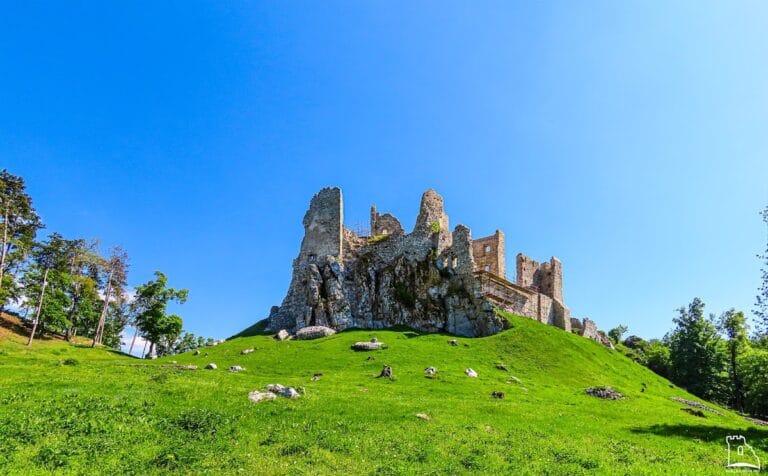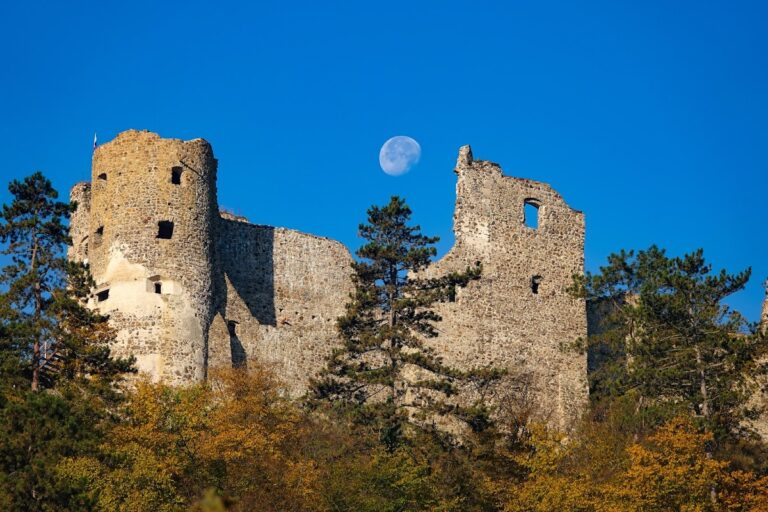Nitra Castle: A Historic Fortress and Episcopal Seat in Slovakia
Visitor Information
Google Rating: 4.6
Popularity: Medium
Google Maps: View on Google Maps
Official Website: www.nitrianskyhrad.sk
Country: Slovakia
Civilization: Unclassified
Remains: Military
History
Nitra Castle stands on a prominent hill in the center of Nitra, Slovakia, and its origins trace back to the medieval Slavic principality established in the late 8th century. The early settlement was strategically placed on a hill reaching 220 meters above sea level, protected naturally by the Nitra River on three sides. This location is linked to early fortifications and is believed to have included Pribina’s church, which features in the earliest written records that mention both the settlement and the principality itself.
During the 9th century, Nitra became part of Great Moravia, a Slavic state that expanded its influence in the region. At this time, the fortress on the hill was enlarged and strengthened to serve as a princely seat. Written sources dating from 871 and the middle of the 11th century refer to a basilica dedicated to Saint Emeram (also known as Jimram), which is an enduring part of the castle complex. As the Kingdom of Hungary took shape in the following centuries, Nitra’s fortifications evolved into a formal castle, fulfilling important administrative functions under Hungarian rule.
The castle endured the tumultuous events of the 13th century, surviving the Mongol invasion of 1241 largely intact. However, in 1271, it faced considerable devastation during a siege led by Prěmysl Otakar II. This attack resulted in the burning of Saint Emeram’s church and extensive damage to the defensive walls, prompting subsequent restoration efforts to rebuild both the church and fortifications.
In the centuries that followed, Nitra Castle remained a focal point of regional power and military significance. From the 14th to the 16th centuries, it was influenced by notable rulers including Matúš Čak Trenčiansky, Sigismund of Luxembourg, and Matthias Corvinus. The castle suffered heavy destruction in 1465 during conflicts involving Corvinus’s troops. Amid rising threats from the Ottoman Turks in the 16th century, the castle’s defenses were further reinforced. This period saw the construction of a Renaissance-style palace and a new inner gate to strengthen the fortress.
Although well-defended, the castle fell briefly to Turkish forces in 1663. This brief occupation led to extensive reconstruction of the defensive system afterwards. By the early 18th century, the complex underwent additional changes with the rebuilding of the upper church and the addition of the bishop’s palace. Since 1296, following a royal grant from King Andrew III to Bishop Pascház, the castle has served as the seat of the Nitra bishopric. Bishop Pascház was responsible for repairing the castle’s damaged walls and facilities after the earlier conflicts.
Remains
Nitra Castle occupies a hilltop enclosed by natural slopes and steep banks formed by the Nitra River, offering a naturally defensible position. The complex presents layers of architectural development spanning several centuries, with a mix of medieval fortifications and later Renaissance and baroque additions shaped by military needs and ecclesiastical functions.
A prominent feature of the site is the basilica of Saint Emeram, constructed in the first half of the 13th century. Built primarily of stone, this church has undergone restorations but remains one of the best-preserved medieval structures within the castle grounds. It occupies a central role in the castle, reflecting its historical importance as a religious center linked with early Christian presence in the region.
Parts of the castle’s defensive walls survive from the medieval period, showcasing thick stone construction designed to withstand sieges. Sections of these fortifications include projecting bastions that allowed defenders to cover the perimeter effectively. Within the fortification system lies the upper Gothic church, dating from the early 14th century. Its surviving elements and architectural features highlight the gothic style of the period and contribute to understanding the castle’s ecclesiastical significance.
From the turbulent 16th century, an inner gate built during the Turkish threat remains intact, demonstrating the castle’s strategic adaptations to new military challenges. This gate and the Renaissance palace constructed nearby illustrate the shift in architectural approaches aimed at combining fortification with residential comfort and administrative needs.
Buildings dating to the late 17th and 18th centuries, including the bishop’s palace, have largely retained their original appearance following post-Turkish siege reconstruction efforts. These structures embody the castle’s ongoing role as the seat of the bishopric and demonstrate the layers of history visible in the complex’s fabric.
Today, Nitra Castle stands as a dominant landmark with well-preserved historical elements, reflecting its long use as a fortress, religious center, and administrative hub. It remains a vital cultural monument within Slovakia and a testimony to the region’s medieval and early modern history.










